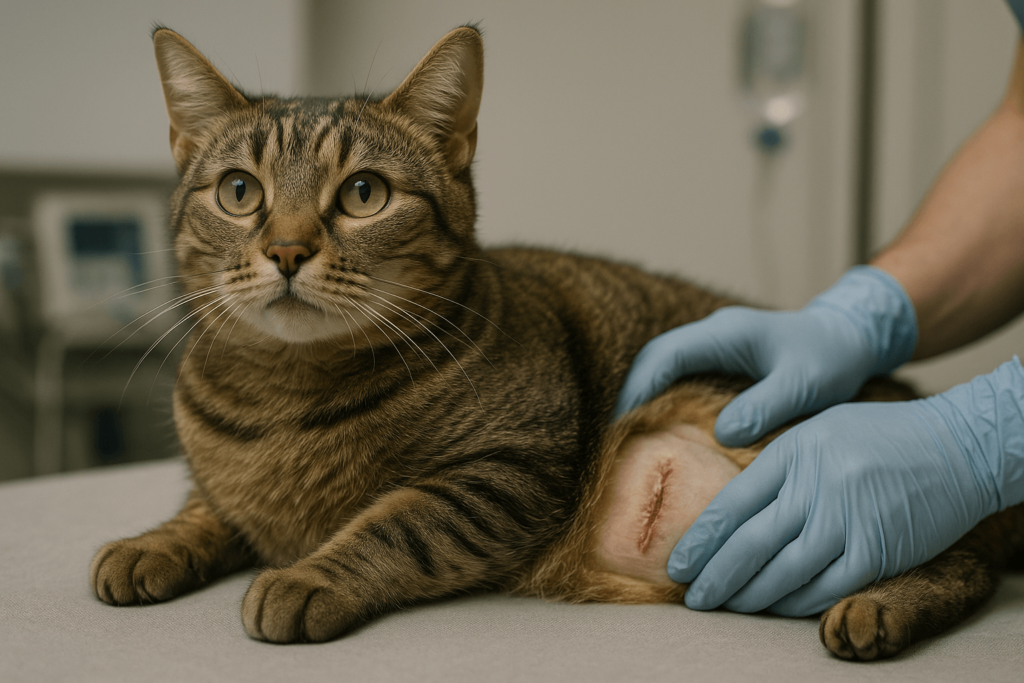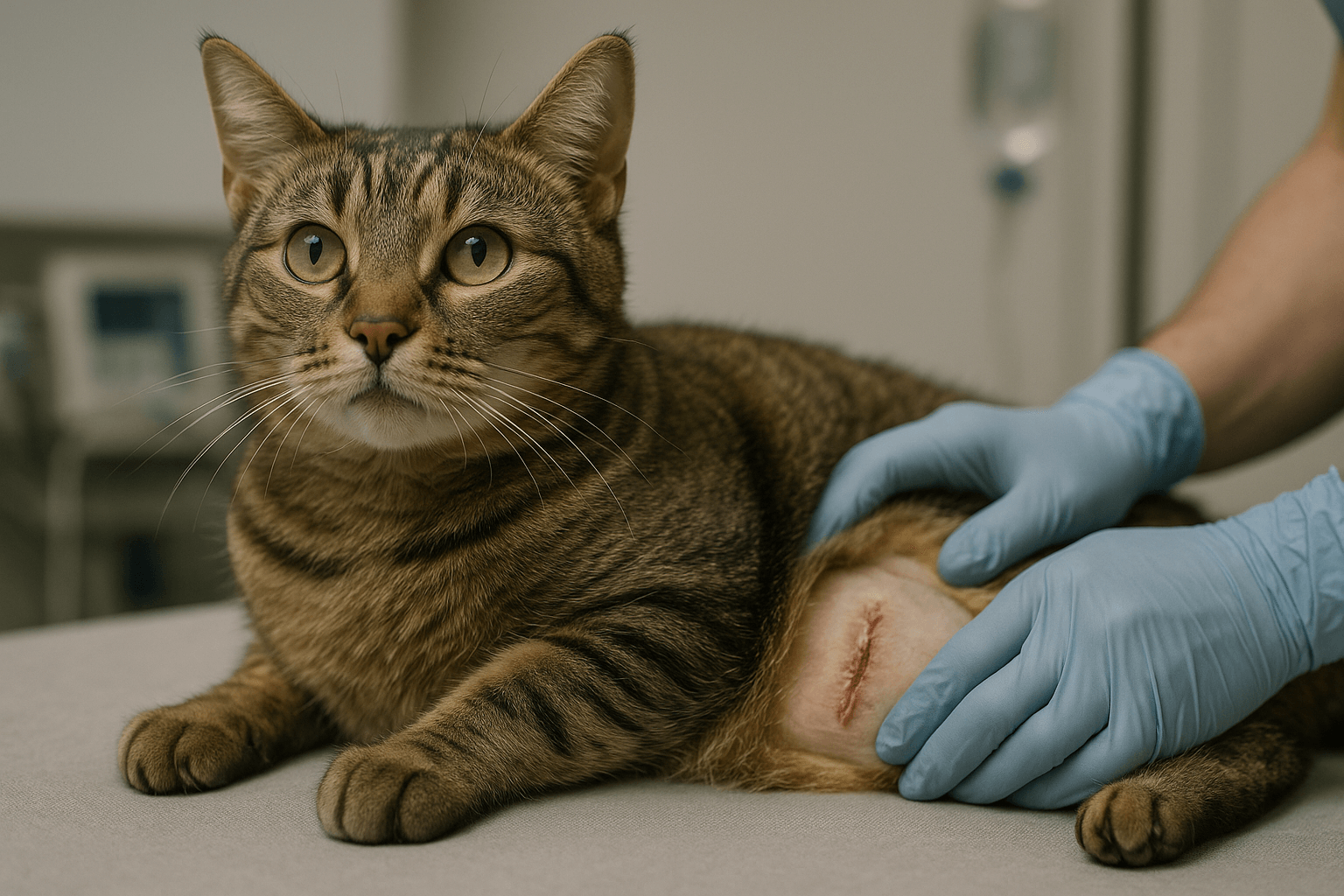Can a Spayed Cat Get Pyometra? Understanding the Risks and Realities
While spaying is one of the most effective ways to prevent pyometra, a serious uterine infection in cats, many pet owners wonder: can a spayed cat get pyometra? The short answer is — it’s extremely rare, but not entirely impossible. This comprehensive guide explores the medical nuances behind this condition, explains why complications can still arise after surgery, and provides essential insights for cat owners seeking to protect their feline companions. We’ll break down the types of spay procedures, identify risk factors, recognize warning signs, and offer expert-backed strategies for prevention and treatment. By understanding both the biology and the exceptions, you can ensure your cat remains healthy long after her spay surgery.
What Is Pyometra and Why Does It Occur in Cats?
Pyometra is a life-threatening condition characterized by the accumulation of pus within the uterus, typically occurring in unspayed female cats due to hormonal changes after heat cycles. The repeated exposure to progesterone thickens the uterine lining over time, creating an ideal environment for bacterial growth — usually from the cat’s own vaginal flora.
Hormonal Influence: After each estrus cycle, progesterone levels rise, causing cystic endometrial hyperplasia — a precursor to pyometra.
Bacterial Invasion: E. coli and other bacteria can ascend from the vagina into the uterus, especially when the cervix is open or weakened.
Closed vs. Open Pyometra: In open pyometra, pus drains through the cervix, often visible as discharge. In closed pyometra, the cervix is sealed, leading to rapid toxin buildup and higher mortality.
Age Factor: Middle-aged to older intact females are at greatest risk, especially those who have never given birth.
Post-Heat Timing: Pyometra typically develops 4–8 weeks after a heat cycle, making timing a critical factor in monitoring at-risk cats.
Understanding the mechanism of pyometra highlights why spaying eliminates the primary source of the disease — the uterus itself. However, rare surgical and biological exceptions mean vigilance should continue even after sterilization.

Types of Spay Procedures and Their Impact on Pyometra Risk
Not all spay surgeries are identical, and the technique used can influence whether residual tissue remains that might, in rare cases, lead to complications resembling pyometra. Most veterinarians perform an ovariohysterectomy, but variations exist depending on species, age, and medical context.
Ovariohysterectomy (OVH): This is the standard spay procedure — removal of both ovaries and the entire uterus. When performed completely, it eliminates the risk of true pyometra.
Ovariectomy (OVE): Only the ovaries are removed, leaving the uterus behind. Rarely used in cats in most Western countries, but more common in some European regions. Leaves the cat vulnerable to stump pyometra if any uterine tissue remains.
Partial Hysterectomy: In unusual cases, such as trauma or incomplete surgery, part of the uterus may be left behind — creating a potential site for infection.
Uterine Stump Pyometra: A rare post-spay complication where infected tissue forms at the surgical remnant, mimicking classic pyometra symptoms.
Hormonal Implants or Medical Interference: If a cat receives progesterone-based medications post-spay (e.g., for behavior control), and residual uterine tissue exists, this can stimulate abnormal changes.
The vast majority of spay procedures in cats are full ovariohysterectomies, which effectively prevent pyometra. However, knowing the type of surgery your cat underwent — and ensuring complete removal — is crucial for long-term health.
Check this guide 👉Spayed vs Unspayed Cat: Best 7 Expert Tips!
Check this guide 👉Do Cats Gain Weight After Being Spayed? Best 7 Expert Tips!
Check this guide 👉How Long to Keep a Cat Confined After Spay: Best 7 Tips!
| Standard Spay (OVH) | Risk of Post-Spay Pyometra |
|---|---|
| Removal of both ovaries and entire uterus | Effectively zero risk of true pyometra |
| Most common and recommended method in cats | No functional uterine tissue remains |
| Performed routinely in clinics worldwide | Prevents reproductive diseases including cancer |
| Low complication rate when done correctly | Rare cases only if surgical error occurs |
| Provides lifelong protection from uterine issues | Considered definitive prevention |
Symptoms of Pyometra-Like Conditions in Spayed Cats
If your spayed cat begins showing signs typically associated with pyometra — such as lethargy, vomiting, increased thirst, or abdominal swelling — it’s natural to worry. While true pyometra is nearly impossible without a uterus, certain rare conditions can mimic its presentation and require urgent attention.
Stump Pyometra: Occurs when a small portion of the uterus is left behind during surgery and becomes infected, especially if stimulated by hormones.
Ovarian Remnant Syndrome: Rarely, ovarian tissue is accidentally left behind, producing estrogen and progesterone that can affect any remaining uterine stump.
Abdominal Infections: Other causes like abscesses, peritonitis, or urinary tract infections can present similar clinical signs.
Tumors or Cysts: Benign or malignant growths in the abdomen may cause distension and systemic illness resembling pyometra.
Hormone-Responsive Tissue: Residual tissue exposed to exogenous progesterone (from medication) can swell and become infected.
These conditions are not common, but they underscore the importance of accurate diagnosis. Imaging (ultrasound), blood work, and sometimes exploratory surgery are needed to determine the root cause.
Diagnosing Post-Spay Uterine Complications
When a spayed cat shows signs of illness suggestive of pyometra, veterinarians must consider alternative diagnoses while ruling out surgical remnants. Diagnosis requires a combination of history, physical exam, and diagnostic tools to avoid misinterpretation.
Medical History Review: Knowing the age at spay, surgical details (if available), and any hormone treatments helps assess risk.
Physical Examination: Abdominal palpation may reveal masses, fluid, or pain indicating internal inflammation or infection.
Ultrasound Imaging: This non-invasive tool can detect fluid-filled structures, confirming or ruling out stump pyometra or cysts.
Blood Work Analysis: Elevated white blood cell counts and kidney values may suggest infection or sepsis.
Exploratory Laparotomy: In unclear cases, surgery may be required to visually inspect the abdominal cavity and remove suspicious tissue.
Accurate diagnosis is essential because treatment varies significantly between stump pyometra, tumors, and other infections. Misdiagnosis can delay life-saving interventions.
Preventing Pyometra Through Proper Spay Techniques
The best defense against pyometra — both traditional and stump-related — is a well-executed, complete spay procedure. Veterinary standards emphasize thorough removal of reproductive organs to eliminate future risks.
Ensure Complete Ovariohysterectomy: Confirm that both ovaries and the entire uterus are removed, down to the cervical attachment.
Use Magnification and Careful Dissection: Especially in young or small cats, precise technique prevents leaving behind tiny tissue fragments.
Avoid Hormonal Medications Post-Spay: Progesterone drugs (like megestrol) should never be given unless absolutely necessary and only under strict supervision.
Choose Experienced Veterinarians: Surgeons familiar with feline anatomy are less likely to make errors during delicate procedures.
Request Surgical Records: Keep documentation of the procedure, including notes on what was removed, for future reference.
Pet owners play a role too — asking questions about the surgical approach and following up on recovery signs ensures accountability and peace of mind.
Treatment Options for Stump Pyometra and Related Conditions
If a spayed cat develops stump pyometra or another post-surgical complication, immediate treatment is critical. Unlike true pyometra in intact cats, where medical management is sometimes attempted, surgical intervention is almost always required in these cases.
Emergency Surgery: Removal of the infected uterine stump is the primary treatment and offers the best chance of full recovery.
Antibiotic Therapy: Administered before and after surgery to combat systemic infection and prevent sepsis.
Fluid Support: Intravenous fluids correct dehydration and support kidney function during recovery.
Pain Management: Post-operative analgesia ensures comfort and promotes healing.
Follow-Up Monitoring: Blood tests and ultrasounds post-surgery confirm resolution and rule out recurrence.
Time is of the essence. Delaying treatment increases the risk of rupture, peritonitis, and fatal complications.
How to Recognize Early Signs of Stump Pyometra in Spayed Cats
While true pyometra is prevented by a complete spay, stump pyometra remains a rare but serious concern when residual uterine tissue is left behind. Recognizing the early warning signs can mean the difference between a routine recovery and a life-threatening emergency. Being proactive allows for faster diagnosis and treatment, minimizing risk to your cat’s health.
Increased Thirst and Urination: One of the first noticeable changes may be your cat drinking more water than usual — a sign of systemic infection or hormonal influence.
Lethargy and Withdrawal: A normally active or social cat may become quiet, hide more often, or avoid interaction, indicating discomfort or illness.
Loss of Appetite: Refusing food or eating significantly less than normal can signal internal distress or infection.
Abdominal Swelling or Sensitivity: You might observe a distended belly or notice your cat flinching when touched near the lower abdomen.
Fever or Warmth to Touch: An elevated body temperature is a common immune response to infection, though this requires a thermometer to confirm.
These symptoms mimic those seen in intact cats with pyometra, which is why owners and even veterinarians must consider surgical history and perform thorough diagnostics.
Frequently Asked Questions About Spayed Cats and Pyometra
Can a spayed cat get pyometra?
True pyometra is virtually impossible if the entire uterus was removed. However, “stump pyometra” can occur if a small portion of the uterus remains after surgery.
How common is stump pyometra in cats?
Extremely rare. It only happens when incomplete surgical removal leaves behind uterine tissue, combined with hormonal stimulation.
What are the signs of stump pyometra?
Similar to regular pyometra — lethargy, vomiting, increased thirst, fever, and abdominal swelling. Some cats may also have a discharge if the stump connects to the vagina.
Can ovarian tissue regrow after spaying?
No, but sometimes microscopic pieces of ovarian tissue are accidentally left behind, which can remain functional — a condition known as ovarian remnant syndrome.
Should I worry if my spayed cat shows heat-like behavior?
Yes. This could indicate ovarian remnant syndrome, which may contribute to stump pyometra if uterine tissue is also present.
Final Thoughts: Peace of Mind After Spaying
While the idea of a spayed cat getting pyometra is alarming, the reality is reassuring — when the surgery is done correctly, the risk is negligible. True pyometra cannot occur without a uterus, and stump pyometra is a rare exception linked to incomplete procedures. By choosing a skilled veterinarian, understanding the type of spay performed, and staying alert to unusual symptoms, you can protect your cat’s long-term health. Spaying remains one of the most beneficial procedures for female cats, preventing not only pyometra but also unwanted litters and reproductive cancers. With proper care, your spayed cat can enjoy a long, happy, and healthy life — free from the dangers of uterine disease.
Canned Pumpkin for Cat Diarrhea: Best 7 Expert Tips! Natural remedy to firm stools, soothe upset bellies, and support gut health safely.
Can a Cat Give You Scabies? Best 7 Expert Tips! Discover the truth about feline mites, human skin risks, and how to protect yourself—without panic.
Cat Flea vs Human Flea: Best 7 Expert Tips! Discover the truth about bites, species, and how to eliminate infestations for good.
Weird Cat Behaviors: Best 7 Expert Tips! Discover why cats do strange things—and how to understand, not punish, their instincts for a happier home.





